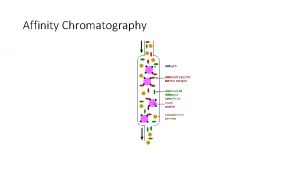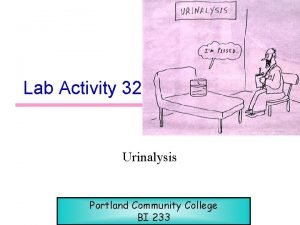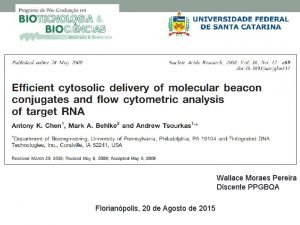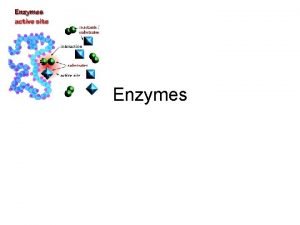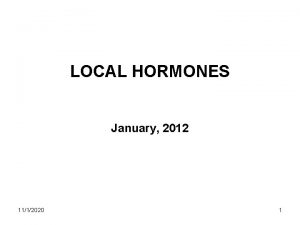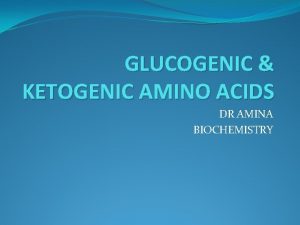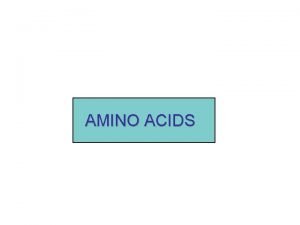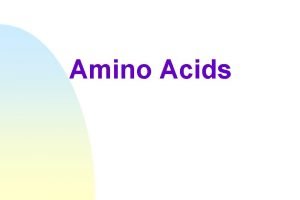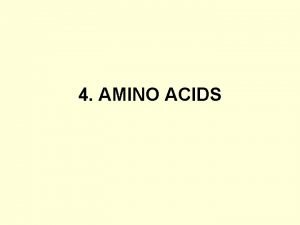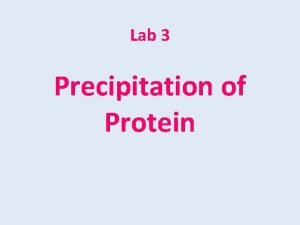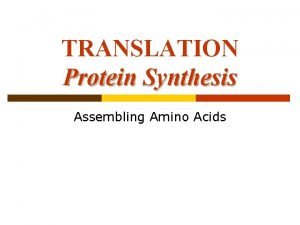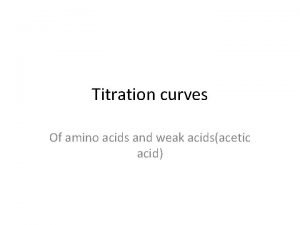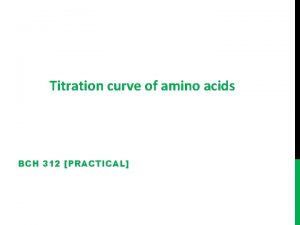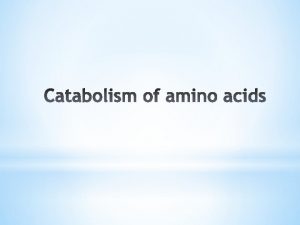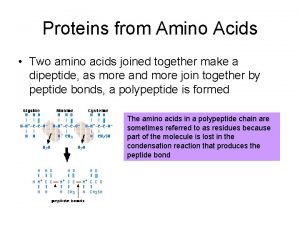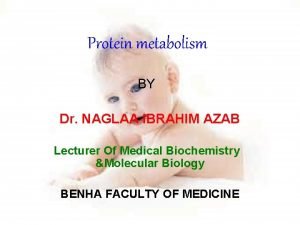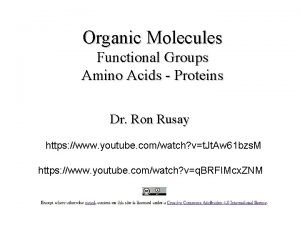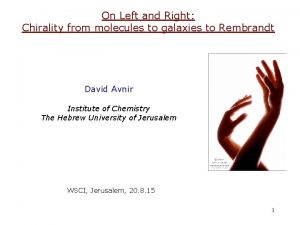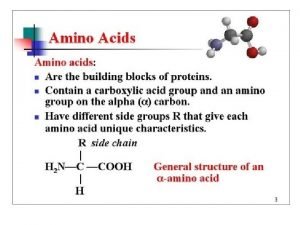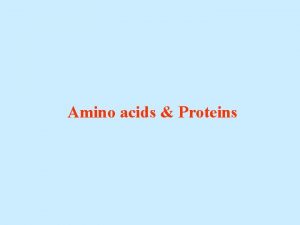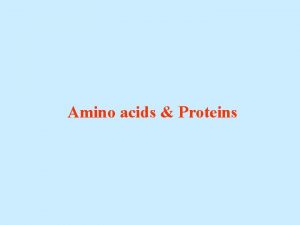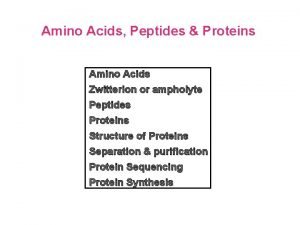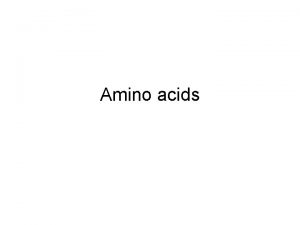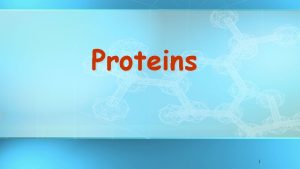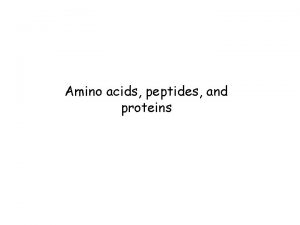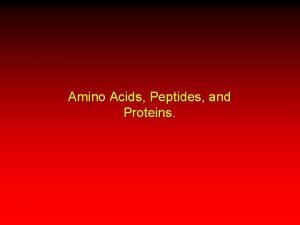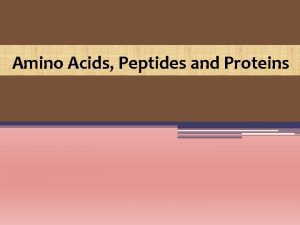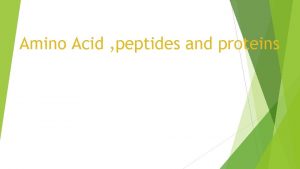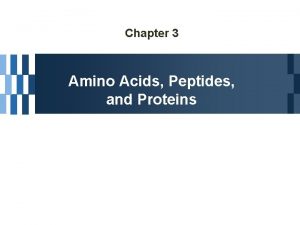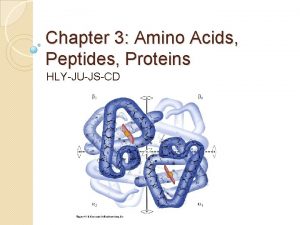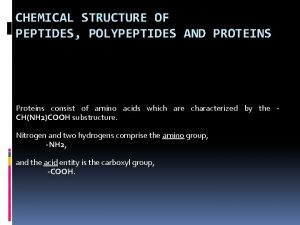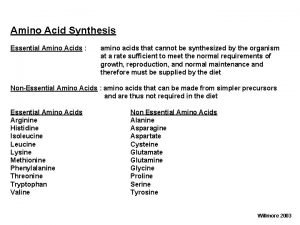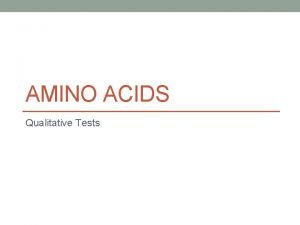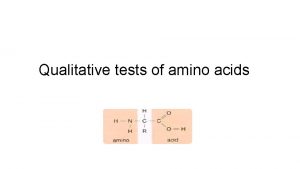Amino Acids Peptides and Proteins Polypeptides and Proteins



















- Slides: 19

Amino Acids, Peptides and Proteins

Polypeptides and Proteins • In 1902, Emil Fischer proposed that proteins are long chains of amino acids joined by peptide bonds • Peptide bond: bond the special name given to the amide bond between the -carboxyl group of one amino acid and the -amino group of another

Peptides ▫ peptide: the name given to a short polymer of amino acids joined by peptide bonds; they are classified by the number of amino acids in the chain ▫ dipeptide: a molecule containing two amino acids joined by a peptide bond ▫ tripeptide: tripeptide a molecule containing three amino acids joined by peptide bonds ▫ polypeptide: polypeptide a macromolecule containing many amino acids joined by peptide bonds ▫ protein: protein a biological macromolecule of molecular weight 5000 g/mol or greater, consisting of one or more polypeptide chains

Peptides • Peptides are amino acid polymers containing 2– 50 individual units • Peptides with >50 units are called proteins • By convention, peptide structures are written with the N -terminal amino acid on the left and the C-terminal amino acid on the right. A dipeptide glycylalanine = gly-ala

Peptides glycylalanine = gly-ala glycine amino-terminal amino acid

Peptides glycylalanine = gly-ala alanine carboxy-terminal amino acid

Peptides glycylalanine = gly-ala peptide bond

Peptides • A tetrapeptide: N-terminus C-terminus glycylserylphenylalanylglycine gly-ser-phe-gly

Peptides • The Peptide (Amide) Bond ▫ The amide nitrogen is sp 2 hybridized and the lone pair is conjugated with the carbonyl group ▫ There is considerable C–N double-bond character ▫ Rotation about the C–N bond is difficult

Peptides • The Peptide (Amide) Bond ▫ The amide groups are planar. ▫ The R-groups are on opposite sides of the plane. gly-ser-phe-gly

Peptides • The Peptide (Amide) Bond ▫ The amide groups are planar. ▫ The R-groups are on opposite sides of the plane. gly-ser-phe-gly

Peptides • The only other type of covalent bond between amino acids in proteins and peptides is the disulfide linkage between two cysteine units:

Peptides • Note: ▫ Thiols are readily oxidized to disulfides. ▫ Disulfides are readily reduced to thiols.

Peptides • Disulfide links serve to connect polypeptide chains:

Peptides Copyright © 2010 Pearson Education, Inc. • … or can form a macrocycle: bovine oxytocin

Peptides • Conotoxin G I ▫ A peptide neurotoxin isolated from the venom of the fishhunting cone snail Conus geographicus. ▫ It is a paralytic toxin that blocks nicotinic cholinoreceptors.

Peptides • Conotoxin G I

Structure Determination of Peptides • Amino Acid Analysis. Find out which amino acids and how many make up the peptide • Terminal Residue Analysis. Find out what’s on the ends N-Terminal Analysis Edman degradation C-Terminal Analysis Carboxypeptidase

Structure Determination of Peptides • Partial Hydrolysis (enzymatic) ▫ Hydrolyze the peptide into smaller fragments. Trypsin - Cleaves at lys and arg Chymotrypsin - Cleaves at phe, tyr, and trp Pepsin - Cleaves at phe, tyr, trp, leu, asp, glu Cyanogen bromide (not enzymatic) - Cleaves at met ▫ Determine the sequence of the fragments. Successive Edman degradations.
 Amidomalonate synthesis mechanism
Amidomalonate synthesis mechanism Peptides and proteins
Peptides and proteins Amino acids are joined together in proteins by
Amino acids are joined together in proteins by Pyuria leukocytes urine
Pyuria leukocytes urine Ppgbqa
Ppgbqa Most reactions take place in a number of
Most reactions take place in a number of Local hormones
Local hormones Isoleucine ketogenic glucogenic
Isoleucine ketogenic glucogenic Amino acid r groups
Amino acid r groups Glucogenic amino acids
Glucogenic amino acids Difference between hydrophobic and hydrophilic amino acids
Difference between hydrophobic and hydrophilic amino acids Precipitation of proteins by strong mineral acids
Precipitation of proteins by strong mineral acids Amino acid wheel chart
Amino acid wheel chart Amino acids titration curves
Amino acids titration curves Titration curve of amino acids
Titration curve of amino acids Deamination of amino acids
Deamination of amino acids Two amino acids joined together
Two amino acids joined together Deamination of glutamine
Deamination of glutamine 20 amino acid structure
20 amino acid structure Right handed amino acids
Right handed amino acids

